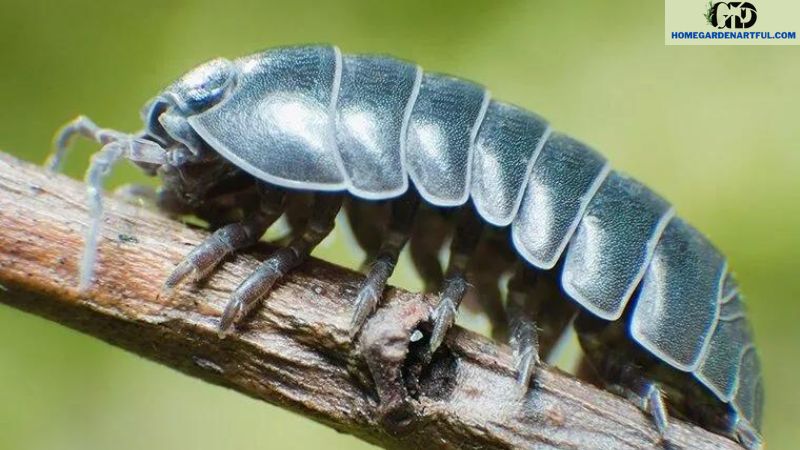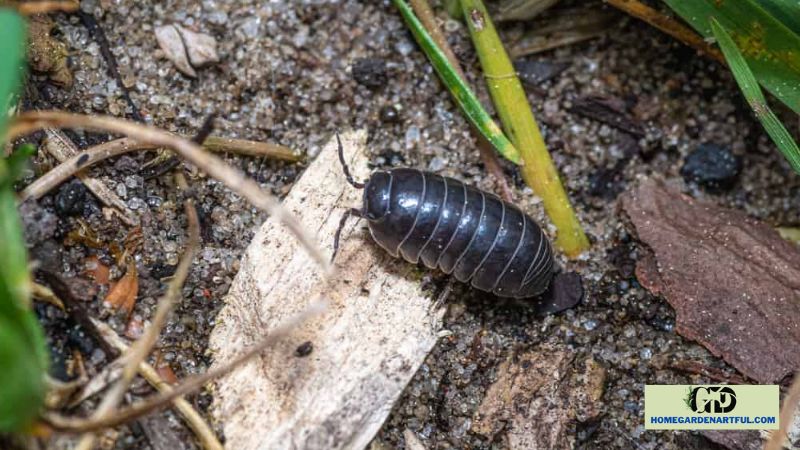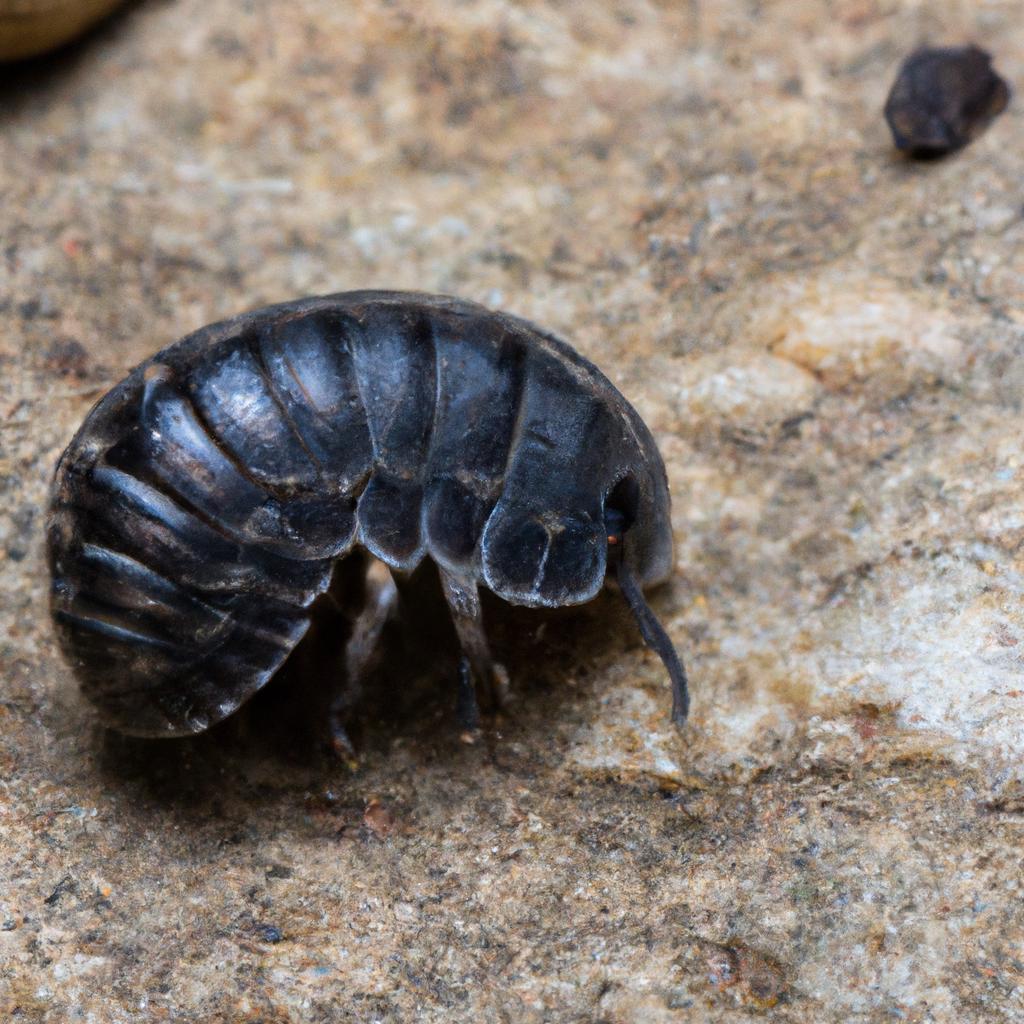Ah, the humble pill bug. Also known as roly-polies or woodlice, these little creatures have captured our curiosity for years. But there’s one question that seems to keep popping up: do pill bugs bite? Today, homegardenartful is here to put this question to rest and shed some light on the fascinating world of pill bugs.
A. The Fascinating World of Pill Bugs
To truly understand whether pill bugs bite, we must first acquaint ourselves with these intriguing creatures. Pill bugs belong to the group of crustaceans known as isopods, which are typically found in moist environments such as gardens, forests, and even our own backyards. With their segmented bodies and armored exoskeletons, they resemble tiny tanks on a mission.
B. Unveiling the Mystery
Now, let’s address the burning question: Do pill bugs bite? The answer may surprise you. While pill bugs do possess mouthparts, their tiny mandibles are not designed to bite humans. Rather, they serve a more humble purpose – pill bugs use their mandibles to nibble on decaying organic matter. They are nature’s cleanup crew, happily feasting on dead leaves, rotting wood, and other decomposing materials.
But wait, you might be wondering, what about those occasional moments when I feel a little nip while handling a pill bug? Fear not, my friend. It’s highly likely that what you experienced was merely a tickle or a gentle pinch, not a genuine bite. Pill bugs lack the ability to pierce human skin or cause any harm.
So, the next time you come across these little crustaceans, remember that their harmless nibbles are reserved solely for nature’s buffet. They play a vital role in maintaining the balance of our ecosystems, recycling organic matter and enriching the soil. Let’s appreciate these miniature marvels for their fascinating behaviors rather than fearing their non-existent bites.
Stay tuned as we delve deeper into the intriguing world of pill bugs, uncovering their feeding habits, anatomy, and dispelling any misconceptions along the way. The adventure continues!
Pill Bugs: Anatomy and Behavior

A. Unveiling their Physical Appearance
When it comes to pill bugs, their physical appearance is undeniably fascinating. These tiny crustaceans typically measure around 1 cm in length and feature a segmented exoskeleton that resembles a suit of armor. Their bodies are divided into several sections, allowing for flexibility and maneuverability as they scuttle about.
B. Insights into Behavior and Habitat
Curiosity piqued, let’s now explore the behavior and habitat of these intriguing creatures. Pill bugs thrive in moist environments, seeking shelter under rocks, logs, and leaf litter. You’re likely to find them in your garden, backyard, or even in the cracks of damp soil.
These nocturnal creatures are most active during the night, using their sensory antennae to navigate their surroundings. They prefer areas with high humidity levels, as excessive dryness can lead to dehydration. If you spot pill bugs congregating in large numbers, it’s a sign of a healthy ecosystem, as they indicate the presence of abundant decaying organic matter.
C. The Fascinating Defensive Mechanism
Ah, the famous defensive mechanism of pill bugs – rolling into a tight ball. When threatened, pill bugs have a unique ability to curl their bodies into a protective sphere, shielding their vulnerable underbellies. This behavior not only serves as a shield against potential predators but also helps to retain moisture within their bodies.
It’s a sight to behold as these armored critters swiftly transform into spherical roly-polies, showcasing their impressive adaptation skills. Once the danger subsides, they cautiously unroll and resume their explorations.
As we continue our journey into the world of pill bugs, we’ll discover more about their feeding habits and the truth behind the common misconceptions surrounding their bites. So, stay tuned and let’s unravel the mysteries together!
Pill Bugs’ Feeding Habits
A. A Taste for Nature’s Delicacies
When it comes to dining, pill bugs have their preferences. These little critters have a voracious appetite for decaying organic matter. You can think of them as nature’s very own gourmet chefs, specializing in the art of breaking down dead leaves, rotting wood, and other decomposing materials. It’s their unique diet that sets them apart in the animal kingdom.
B. The Decomposers Extraordinaire
Pill bugs play a vital role in the ecosystem by recycling organic matter. Their feeding habits contribute to the process of decomposition, which is essential for nutrient cycling and soil enrichment. As they munch away on decaying plant material, pill bugs help break it down into smaller pieces, facilitating the work of bacteria and fungi that further break down the organic matter, releasing valuable nutrients back into the soil.
C. Harmless Dining Etiquette
Now, let’s address any concerns about the impact of pill bugs’ feeding habits. Rest assured, their dining experience poses no harm to humans. These little crustaceans have no interest in biting or feeding on living organisms, including humans. Their preference for decaying matter ensures that they peacefully coexist with us in our gardens and outdoor spaces without causing any damage or inconvenience.
So, the next time you stumble upon a pill bug feasting on fallen leaves or munching on decomposing wood, take a moment to appreciate their important role in nature’s grand scheme. Instead of fearing their harmless feeding habits, let’s marvel at their ability to transform decaying organic matter into fertile soil, nurturing the growth of plants and sustaining the delicate balance of our ecosystems.
In the following sections, we’ll dive deeper into the fascinating anatomy of pill bugs and debunk any misconceptions surrounding their ability to bite. Stay tuned for more intriguing insights into the world of these remarkable creatures!

Understanding Pill Bug’s Mouthparts
A. Description of Pill Bug’s Mouth and Mandibles
When it comes to understanding whether pill bugs bite, it’s important to take a closer look at their unique mouthparts. Pill bugs possess a mouth located on their ventral side, underneath their bodies. This mouth is equipped with a pair of mandibles that resemble miniature pincers. These mandibles are used for grasping and manipulating their food, much like tiny utensils.
B. Explanation of How Their Mouthparts are Adapted for Chewing
Pill bugs’ mouthparts are specifically adapted for their feeding habits. Their mandibles are robust and strong, allowing them to chew through tough plant matter and decaying organic material. As they nibble on decomposing leaves and wood, their mandibles work tirelessly to break down the food into smaller, more manageable pieces.
While their mouthparts are well-suited for their feeding needs, it’s important to note that these adaptations are not designed for biting humans. The structure and size of their mandibles simply do not allow them to puncture our skin or cause any harm. So, if you’ve ever felt a slight pinch or tickle while handling a pill bug, rest assured that it’s just their way of exploring their environment, not an attempt to bite.
C. Clarification That Their Mouthparts are Not Designed to Bite Humans
To dispel any lingering doubts, let’s be crystal clear: pill bugs do not bite humans. Their mouthparts are not equipped with the necessary components to break through our skin. So, if you ever come across these fascinating creatures, feel free to observe, hold, and interact with them without any fear of being bitten. They are harmless guests in our outdoor spaces, diligently carrying out their important role in the ecosystem.
Now that we’ve unraveled the mystery behind pill bugs’ mouthparts, let’s continue our exploration and delve into their feeding habits, shedding more light on their intriguing behaviors. Stick around for more fascinating insights!
Potential Misconceptions and Reasons for Concern
A. Addressing Common Misconceptions
Let’s clear the air and address some common misconceptions surrounding pill bug bites. Despite their harmless nature, pill bugs have often been subject to unwarranted blame for mysterious bites. However, it’s crucial to understand that these little critters are innocent bystanders in the world of biting insects.
B. Mistaken Identity: Other Insects’ Bites
One reason why people may mistakenly attribute bites to pill bugs is the similarity in appearance between their nibbles and the bites of other insects. The truth is, there are numerous insects out there with the ability to bite humans. It’s easy to jump to conclusions and point fingers at our friendly neighborhood roly-polies, but they simply lack the necessary mouthparts and venom to cause any harm.
C. Harmless Nibbles
Rest assured, pill bug bites pose no threat to humans. These tiny creatures lack venom and any harmful effects from their nibbles are nonexistent. They are not carriers of diseases and are far more interested in their leafy buffet than in taking a nibble out of us. So, if you find yourself with an inexplicable bite mark, it’s highly unlikely that a pill bug was the culprit.
In conclusion, it’s essential to dispel the misconceptions surrounding pill bug bites. These harmless creatures are often misunderstood and unfairly blamed for bites they simply aren’t capable of inflicting. Join me as we journey deeper into the world of pill bugs, exploring their fascinating feeding habits and uncovering the truth behind their intriguing behavior.
You may also like: Maryland Garden Pests
Conclusion
After diving into the world of pill bugs, we can confidently answer the question: Do pill bugs bite? The answer is a resounding no. These fascinating creatures, also known as roly-polies or woodlice, may have mouthparts, but they are not designed to bite humans. Instead, pill bugs play a crucial role in our environment as nature’s cleanup crew, feasting on decaying organic matter and enriching the soil.
While some may mistake the occasional tickle or pinch from a pill bug as a bite, it’s important to remember that their mandibles are not capable of piercing human skin or causing harm. Pill bugs pose no threat to us and should be appreciated for their unique behaviors and ecological contributions.
So, the next time you spot a pill bug rolling into a little ball or scuttling about, take a moment to admire their resilience and adaptability. These tiny crustaceans remind us of the wonders of the natural world and the interconnectedness of all living things.
In conclusion, pill bugs do not bite, and there is no need to fear them. Let’s celebrate these remarkable creatures for their important role in maintaining the balance of our ecosystems. Embrace the wonder of the roly-poly and continue to explore the hidden marvels that nature has to offer.
Thank you for joining me on this journey through the world of pill bugs. Until our paths cross again, stay curious and keep embracing the beauty of the natural world.


